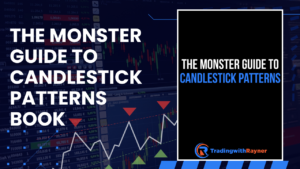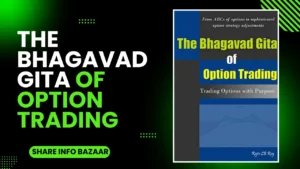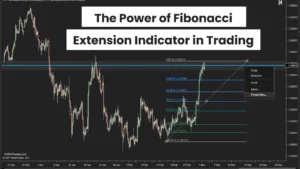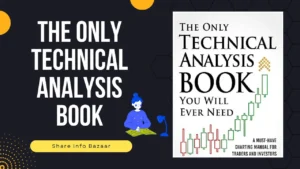Introduction to Options Trading:
Option trading is a type of investment where you can buy and sell contracts that give you the right to buy or sell an asset at a specific price within a set time frame. It’s a way to speculate on the price movement of an underlying asset without actually owning it.
Option trading can be a complex and risky investment strategy, but with the right knowledge and understanding, it can also be a lucrative way to make money.
Table of Content
Key Concepts in Option Trading:
- Options Contracts: These are agreements that give you the right, but not the obligation, to buy or sell an asset at a specific price within a set time period.
- Call Options: These give you the right to buy an asset at a specified price within a set time period.
- Put Options: These give you the right to sell an asset at a specified price within a set time period.
- Strike Price: This is the price at which the option contract allows you to buy or sell the underlying asset.
- Expiration Date: This is the date by which the option contract must be exercised or it becomes void.
Understanding these key concepts is essential for anyone looking to get involved in options trading. It’s important to do thorough research and consider seeking advice from a financial advisor before diving into options trading.

Explaining Premiums and Strikes:
Understanding the concepts of premiums and strikes is crucial in options trading. Let’s break down these key terms to gain a deeper understanding of how they work.
Explaining Premiums:
In options trading, the premium is the price paid for the option contract. It’s the cost of buying the rights associated with the option, and it’s determined by various factors, including the current stock price, time until expiration, and volatility.
Premiums can be seen as the price of admission to participate in options trading. It’s the fee you pay for the potential to make a profit based on the movement of the underlying asset.
Understanding Strikes:
The strike price of an option is the specific price at which the option contract allows you to buy or sell the underlying asset. It is the price at which the buyer of the option can exercise their right to buy or sell the asset, known as the “exercise price.”
The strike price is a critical component of an option contract, as it determines the potential for profit or loss. If the current market price of the underlying asset is higher than the strike price for a call option, it’s considered “in the money (ITM).” Conversely, if the market price is lower than the strike price for a put option, it’s also “in the money.”
Risk and Reward in Options Trading:
Options trading involves a certain level of risk, but it also offers the potential for significant rewards. Understanding the risk and reward dynamics is crucial for anyone looking to engage in options trading.
Risk in Options Trading:
Options trading can be risky due to the potential for substantial losses. The risk factors to consider include:
- Market volatility: Prices of underlying assets can fluctuate rapidly, leading to significant losses.
- Time decay: As options approach their expiration dates, their value can diminish, leading to potential losses for the trader.
- Lack of liquidity: In some cases, options may not be easy to sell, which can increase the risk for the trader.
It’s important for traders to carefully assess and manage these risks to protect their investments.
Reward in Options Trading:
Despite the risks, options trading offers the potential for substantial rewards. Some key factors that contribute to the potential rewards in options trading include:
- Leverage: Options allow traders to control a large amount of an asset with a relatively small investment, potentially leading to significant profits.
- Flexibility: Options trading offers a variety of strategies that can be used to generate profits in different market conditions.
- Profit potential in any market: Options can be used to profit from both bullish and bearish market movements, providing opportunities in various market scenarios.
Traders should carefully assess the potential rewards and weigh them against the risks before engaging in options trading.

Implementing Options Trading Strategies:
Implementing options trading strategies involves careful planning and execution to maximize potential profits while managing risks. There are various strategies that traders can employ to navigate the options market effectively.
Utilizing Bullish and Bearish Strategies:
Traders can use bullish strategies when they anticipate the price of an underlying asset to increase. This involves buying call options or using strategies like bull call spreads and long calls. On the other hand, bearish strategies are employed when traders expect the price of an underlying asset to decrease. Bear put spreads and long put options are examples of bearish strategies.
Exploring Neutral Strategies:
Neutral strategies are used when traders anticipate limited movement in the price of an underlying asset. Examples of neutral strategies include iron condors, calendars, and butterflies. These strategies aim to profit from low volatility in the market.
Managing Risk with Hedging Strategies:
Hedging strategies involve reducing potential losses by offsetting the risk of adverse price movements. Traders can use options to hedge their positions in the stock market, protecting their investments from unexpected market volatility.
By implementing these options trading strategies, traders can effectively navigate the options market and improve their chances of success while managing risks. It’s important to carefully assess market conditions and choose the most suitable strategy based on the anticipated price movement of the underlying asset.
Option Chain Basic to Advance Pdf Free Download:
Q. How do you study option chain?
Ans: The order of columns in an option chain is as follows: strike, symbol, last, change, bid, ask, volume, and open interest.
Q. Which option strategy is best?
Ans: Straddle is considered one of the best Option Trading Strategies for Indian Market.
Q. What is OI in option chain?
Ans: Open Interest means the Interest of traders during a specific strike price.











